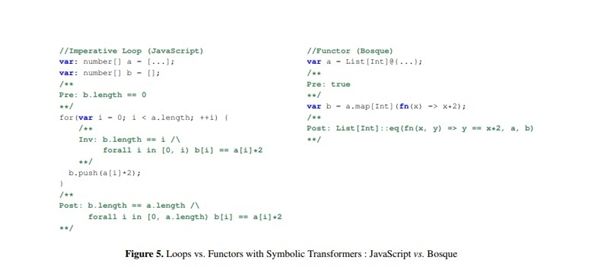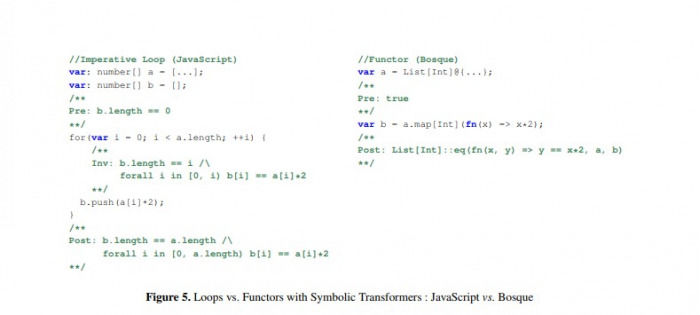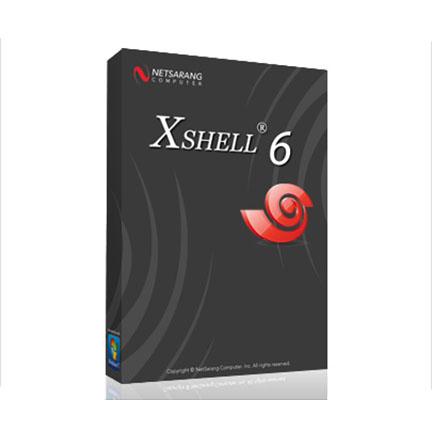基于Java实现Socket编程的方法
 发布于2023-04-30 阅读(0)
发布于2023-04-30 阅读(0)
扫一扫,手机访问
认识Socket
socket,又称套接字,是在不同的进程间进行网络通讯的一种协议、约定或者说是规范。
对于socket编程,它更多的时候像是基于TCP/UDP等协议做的一层封装或者说抽象,是一套系统所提供的用于进行网络通信相关编程的接口。
建立socket的基本流程
我们以linux操作系统提供的基本api为例,了解建立一个socket通信的基本流程:

可以看到本质上,socket是对tcp连接(当然也有可能是udp等其他连接)协议,在编程层面上的简化和抽象。
1.最基本的Socket示范
1.1 单向通信
首先,我们从只发送和接收一次消息的socket基础代码开始:
服务端:
package com.marklux.socket.base;
import java.io.IOException;
import java.io.InputStream;
import java.net.ServerSocket;
import java.net.Socket;
/**
* The very basic socket server that only listen one single message.
*/
public class BaseSocketServer {
private ServerSocket server;
private Socket socket;
private int port;
private InputStream inputStream;
private static final int MAX_BUFFER_SIZE = 1024;
public int getPort() {
return port;
}
public void setPort(int port) {
this.port = port;
}
public BaseSocketServer(int port) {
this.port = port;
}
public void runServerSingle() throws IOException {
this.server = new ServerSocket(this.port);
System.out.println("base socket server started.");
// the code will block here till the request come.
this.socket = server.accept();
this.inputStream = this.socket.getInputStream();
byte[] readBytes = new byte[MAX_BUFFER_SIZE];
int msgLen;
StringBuilder stringBuilder = new StringBuilder();
while ((msgLen = inputStream.read(readBytes)) != -1) {
stringBuilder.append(new String(readBytes,0,msgLen,"UTF-8"));
}
System.out.println("get message from client: " + stringBuilder);
inputStream.close();
socket.close();
server.close();
}
public static void main(String[] args) {
BaseSocketServer bs = new BaseSocketServer(9799);
try {
bs.runServerSingle();
}catch (IOException e) {
e.printStackTrace();
}
}
}客户端:
package com.marklux.socket.base;
import java.io.IOException;
import java.io.OutputStream;
import java.io.UnsupportedEncodingException;
import java.net.Socket;
/**
* The very basic socket client that only send one single message.
*/
public class BaseSocketClient {
private String serverHost;
private int serverPort;
private Socket socket;
private OutputStream outputStream;
public BaseSocketClient(String host, int port) {
this.serverHost = host;
this.serverPort = port;
}
public void connetServer() throws IOException {
this.socket = new Socket(this.serverHost, this.serverPort);
this.outputStream = socket.getOutputStream();
// why the output stream?
}
public void sendSingle(String message) throws IOException {
try {
this.outputStream.write(message.getBytes("UTF-8"));
} catch (UnsupportedEncodingException e) {
System.out.println(e.getMessage());
}
this.outputStream.close();
this.socket.close();
}
public static void main(String[] args) {
BaseSocketClient bc = new BaseSocketClient("127.0.0.1",9799);
try {
bc.connetServer();
bc.sendSingle("Hi from mark.");
}catch (IOException e) {
e.printStackTrace();
}
}
}先运行服务端,再运行客户端,就可以看到效果。
注意这里的IO操作实现,我们使用了一个大小为
MAX_BUFFER_SIZE的byte数组作为缓冲区,然后从输入流中取出字节放置到缓冲区,再从缓冲区中取出字节构建到字符串中去,这在输入流文件很大时非常有用,事实上,后面要讲到的NIO也是基于这种思路实现的。
1.2 双向通信
上面的例子只实现了一次单向的通信,这显然有点浪费通道。socket连接支持全双工的双向通信(底层是tcp),下面的例子中,服务端在收到客户端的消息后,将返回给客户端一个回执。
并且我们使用了一些java.io包装好的方法,来简化整个通信的流程(因为消息长度不大,不再使用缓冲区)。
服务端:
public void runServer() throws IOException {
this.serverSocket = new ServerSocket(port);
this.socket = serverSocket.accept();
this.inputStream = socket.getInputStream();
String message = new String(inputStream.readAllBytes(), "UTF-8");
System.out.println("received message: " + message);
this.socket.shutdownInput(); // 告诉客户端接收已经完毕,之后只能发送
// write the receipt.
this.outputStream = this.socket.getOutputStream();
String receipt = "We received your message: " + message;
outputStream.write(receipt.getBytes("UTF-8"));
this.outputStream.close();
this.socket.close();
}客户端:
public void sendMessage(String message) throws IOException {
this.socket = new Socket(host,port);
this.outputStream = socket.getOutputStream();
this.outputStream.write(message.getBytes("UTF-8"));
this.socket.shutdownOutput(); // 告诉服务器,所有的发送动作已经结束,之后只能接收
this.inputStream = socket.getInputStream();
String receipt = new String(inputStream.readAllBytes(), "UTF-8");
System.out.println("got receipt: " + receipt);
this.inputStream.close();
this.socket.close();
}注意这里我们在服务端接受到消息以及客户端发送消息后,分别调用了
shutdownInput()和shutdownOutput()而不是直接close对应的stream,这是因为在关闭任何一个stream,都会直接导致socket的关闭,也就无法进行后面回执的发送了。但是注意,调用
shutdownInput()和shutdownOutput()之后,对应的流也会被关闭,不能再次向socket发送/写入了。
2. 发送更多的消息:结束的界定
刚才的两个例子中,每次打开流,都只能进行一次写入/读取操作,结束后对应流被关闭,就无法再次写入/读取了。
在这种情况下,如果要发送两次消息,就不得不建立两个socket,既耗资源又麻烦。其实我们完全可以不关闭对应的流,只要分次写入消息就可以了。
但是这样的话,我们就必须面对另一个问题:如何判断一次消息发送的结束呢?
2.1 使用特殊符号
最简单的办法是使用一些特殊的符号来标记一次发送完成,服务端只要读到对应的符号就可以完成一次读取,然后进行相关的处理操作。
下面的例子中我们使用换行符\n来标记一次发送的结束,服务端每接收到一个消息,就打印一次,并且使用了Scanner来简化操作:
服务端:
public void runServer() throws IOException {
this.server = new ServerSocket(this.port);
System.out.println("base socket server started.");
this.socket = server.accept();
// the code will block here till the request come.
this.inputStream = this.socket.getInputStream();
Scanner sc = new Scanner(this.inputStream);
while (sc.hasNextLine()) {
System.out.println("get info from client: " + sc.nextLine());
} // 循环接收并输出消息内容
this.inputStream.close();
socket.close();
}客户端:
public void connetServer() throws IOException {
this.socket = new Socket(this.serverHost, this.serverPort);
this.outputStream = socket.getOutputStream();
}
public void send(String message) throws IOException {
String sendMsg = message + "\n"; // we mark \n as a end of line.
try {
this.outputStream.write(sendMsg.getBytes("UTF-8"));
} catch (UnsupportedEncodingException e) {
System.out.println(e.getMessage());
}
// this.outputStream.close();
// this.socket.shutdownOutput();
}
public static void main(String[] args) {
CycleSocketClient cc = new CycleSocketClient("127.0.0.1", 9799);
try {
cc.connetServer();
Scanner sc = new Scanner(System.in);
while (sc.hasNext()) {
String line = sc.nextLine();
cc.send(line);
}
}catch (IOException e) {
e.printStackTrace();
}
}运行后效果是,客户端每输入一行文字按下回车后,服务端就会打印出对应的消息读取记录。
2.2 根据长度界定
回到原点,我们之所以不好定位消息什么时候结束,是因为我们不能够确定每次消息的长度。
那么其实可以先将消息的长度发送出去,当服务端知道消息的长度后,就能够完成一次消息的接收了。
总的来说,发送一次消息变成了两个步骤
发送消息的长度
发送消息
最后的问题就是,“发送消息的长度”这一步骤所发送的字节量必须是固定的,否则我们仍然会陷入僵局。
一般来说,我们可以使用固定的字节数来保存消息的长度,比如规定前2个字节就是消息的长度,不过这样我们能够传送的消息最大长度也就被固定死了,以2个字节为例,我们发送的消息最大长度不超过2^16个字节即64K。
如果你了解一些字符的编码,就会知道,其实我们可以使用变长的空间来储存消息的长度,比如:
第一个字节首位为0:即0XXXXXXX,表示长度就一个字节,最大128,表示128B
第一个字节首位为110,那么附带后面一个字节表示长度:即110XXXXX 10XXXXXX,最大2048,表示2K
第一个字节首位为1110,那么附带后面二个字节表示长度:即110XXXXX 10XXXXXX 10XXXXXX,最大131072,表示128K
依次类推
当然这样实现起来会麻烦一些,因此下面的例子里我们仍然使用固定的两个字节来记录消息的长度。
服务端:
public void runServer() throws IOException {
this.serverSocket = new ServerSocket(this.port);
this.socket = serverSocket.accept();
this.inputStream = socket.getInputStream();
byte[] bytes;
while (true) {
// 先读第一个字节
int first = inputStream.read();
if (first == -1) {
// 如果是-1,说明输入流已经被关闭了,也就不需要继续监听了
this.socket.close();
break;
}
// 读取第二个字节
int second = inputStream.read();
int length = (first << 8) + second; // 用位运算将两个字节拼起来成为真正的长度
bytes = new byte[length]; // 构建指定长度的字节大小来储存消息即可
inputStream.read(bytes);
System.out.println("receive message: " + new String(bytes,"UTF-8"));
}
}客户端:
public void connetServer() throws IOException {
this.socket = new Socket(host,port);
this.outputStream = socket.getOutputStream();
}
public void sendMessage(String message) throws IOException {
// 首先要把message转换成bytes以便处理
byte[] bytes = message.getBytes("UTF-8");
// 接下来传输两个字节的长度,依然使用移位实现
int length = bytes.length;
this.outputStream.write(length >> 8); // write默认一次只传输一个字节
this.outputStream.write(length);
// 传输完长度后,再正式传送消息
this.outputStream.write(bytes);
}
public static void main(String[] args) {
LengthSocketClient lc = new LengthSocketClient("127.0.0.1",9799);
try {
lc.connetServer();
Scanner sc = new Scanner(System.in);
while (sc.hasNextLine()) {
lc.sendMessage(sc.nextLine());
}
} catch (IOException e) {
e.printStackTrace();
}
}3. 处理更多的连接:多线程
3.1 同时实现消息的发送与接收
在考虑服务端处理多连接之前,我们先考虑使用多线程改造一下原有的一对一对话实例。
在原有的例子中,消息的接收方并不能主动地向对方发送消息,换句话说我们并没有实现真正的互相对话,这主要是因为消息的发送和接收这两个动作并不能同时进行,因此我们需要使用两个线程,其中一个用于监听键盘输入并将其写入socket,另一个则负责监听socket并将接受到的消息显示。
出于简单考虑,我们直接让主线程负责键盘监听和消息发送,同时另外开启一个线程用于拉取消息并显示。
消息拉取线程 ListenThread.java
public class ListenThread implements Runnable {
private Socket socket;
private InputStream inputStream;
public ListenThread(Socket socket) {
this.socket = socket;
}
@Override
public void run() throws RuntimeException{
try {
this.inputStream = socket.getInputStream();
} catch (IOException e) {
e.printStackTrace();
throw new RuntimeException(e.getMessage());
}
while (true) {
try {
int first = this.inputStream.read();
if (first == -1) {
// 输入流已经被关闭,无需继续读取
throw new RuntimeException("disconnected.");
}
int second = this.inputStream.read();
int msgLength = (first<<8) + second;
byte[] readBuffer = new byte[msgLength];
this.inputStream.read(readBuffer);
System.out.println("message from [" + socket.getInetAddress() + "]: " + new String(readBuffer,"UTF-8"));
} catch (IOException e) {
e.printStackTrace();
throw new RuntimeException(e.getMessage());
}
}
}
}主线程,启动时由用户选择是作为server还是client:
public class ChatSocket {
private String host;
private int port;
private Socket socket;
private ServerSocket serverSocket;
private OutputStream outputStream;
// 以服务端形式启动,创建会话
public void runAsServer(int port) throws IOException {
this.serverSocket = new ServerSocket(port);
System.out.println("[log] server started at port " + port);
// 等待客户端的加入
this.socket = serverSocket.accept();
System.out.println("[log] successful connected with " + socket.getInetAddress());
// 启动监听线程
Thread listenThread = new Thread(new ListenThread(this.socket));
listenThread.start();
waitAndSend();
}
// 以客户端形式启动,加入会话
public void runAsClient(String host, int port) throws IOException {
this.socket = new Socket(host, port);
System.out.println("[log] successful connected to server " + socket.getInetAddress());
Thread listenThread = new Thread(new ListenThread(this.socket));
listenThread.start();
waitAndSend();
}
public void waitAndSend() throws IOException {
this.outputStream = this.socket.getOutputStream();
Scanner sc = new Scanner(System.in);
while (sc.hasNextLine()) {
this.sendMessage(sc.nextLine());
}
}
public void sendMessage(String message) throws IOException {
byte[] msgBytes = message.getBytes("UTF-8");
int length = msgBytes.length;
outputStream.write(length>>8);
outputStream.write(length);
outputStream.write(msgBytes);
}
public static void main(String[] args) {
Scanner scanner = new Scanner(System.in);
ChatSocket chatSocket = new ChatSocket();
System.out.println("select connect type: 1 for server and 2 for client");
int type = Integer.parseInt(scanner.nextLine().toString());
if (type == 1) {
System.out.print("input server port: ");
int port = scanner.nextInt();
try {
chatSocket.runAsServer(port);
} catch (IOException e) {
e.printStackTrace();
}
}else if (type == 2) {
System.out.print("input server host: ");
String host = scanner.nextLine();
System.out.print("input server port: ");
int port = scanner.nextInt();
try {
chatSocket.runAsClient(host, port);
} catch (IOException e) {
e.printStackTrace();
}
}
}
}3.2 使用线程池优化服务端并发能力
作为服务端,如果一次只跟一个客户端建立socket连接,未免显得太过浪费资源,因此我们完全可以让服务端和多个客户端建立多个socket。
那么既然要处理多个连接,就不得不面对并发问题了(当然,你也可以写循环轮流处理)。我们可以使用多线程来处理并发,不过线程的创建和销毁都会消耗大量的资源和时间,所以最好一步到位,用一个线程池来实现。
下面给出一个示范性质的服务端代码:
public class SocketServer {
public static void main(String args[]) throws Exception {
// 监听指定的端口
int port = 55533;
ServerSocket server = new ServerSocket(port);
// server将一直等待连接的到来
System.out.println("server将一直等待连接的到来");
//如果使用多线程,那就需要线程池,防止并发过高时创建过多线程耗尽资源
ExecutorService threadPool = Executors.newFixedThreadPool(100);
while (true) {
Socket socket = server.accept();
Runnable runnable=()->{
try {
// 建立好连接后,从socket中获取输入流,并建立缓冲区进行读取
InputStream inputStream = socket.getInputStream();
byte[] bytes = new byte[1024];
int len;
StringBuilder sb = new StringBuilder();
while ((len = inputStream.read(bytes)) != -1) {
// 注意指定编码格式,发送方和接收方一定要统一,建议使用UTF-8
sb.append(new String(bytes, 0, len, "UTF-8"));
}
System.out.println("get message from client: " + sb);
inputStream.close();
socket.close();
} catch (Exception e) {
e.printStackTrace();
}
};
threadPool.submit(runnable);
}
}
}4. 连接保活
我想你不难发现一个问题,那就是当socket连接成功建立后,如果中途发生异常导致其中一方断开连接,此时另一方是无法发现的,只有在再次尝试发送/接收消息才会因为抛出异常而退出。
简单的说,就是我们维持的socket连接,是一个长连接,但我们没有保证它的时效性,上一秒它可能还是可以用的,但是下一秒就不一定了。
4.1 使用心跳包
保证连接随时可用的最常见方法就是定时发送心跳包,来检测连接是否正常。这对于实时性要求很高的服务而言,还是非常重要的(比如消息推送)。
大体的方案如下:
双方约定好心跳包的格式,要能够区别于普通的消息。
客户端每隔一定时间,就向服务端发送一个心跳包
服务端每接收到心跳包时,将其抛弃
如果客户端的某个心跳包发送失败,就可以判断连接已经断开
如果对实时性要求很高,服务端也可以定时检查客户端发送心跳包的频率,如果超过一定时间没有发送可以认为连接已经断开
4.2 断开时重连
使用心跳包必然会增加带宽和性能的负担,对于普通的应用我们其实并没有必要使用这种方案,如果消息发送时抛出了连接异常,直接尝试重新连接就好了。
跟上面的方案对比,其实这个抛出异常的消息就充当了心跳包的角色。
总的来说,连接是否要保活,如何保活,需要根据具体的业务场景灵活地思考和定制。
产品推荐
-

售后无忧
立即购买>- DAEMON Tools Lite 10【序列号终身授权 + 中文版 + Win】
-
¥150.00
office旗舰店
-

售后无忧
立即购买>- DAEMON Tools Ultra 5【序列号终身授权 + 中文版 + Win】
-
¥198.00
office旗舰店
-

售后无忧
立即购买>- DAEMON Tools Pro 8【序列号终身授权 + 中文版 + Win】
-
¥189.00
office旗舰店
-

售后无忧
立即购买>- CorelDRAW X8 简体中文【标准版 + Win】
-
¥1788.00
office旗舰店
-
正版软件
- 学习Golang的投资回报:值得吗?
- 在当今数字化时代,编程技能变得越来越重要。随着互联网和移动应用的普及,编程语言也在不断演进和探索。Go语言(简称Golang)作为一种由谷歌开发的现代化编程语言,逐渐走进了程序员们的视野。那么,学习Golang究竟需要投入多少费用?这项投资值不值得?本文将会一一为您解答。首先,我们需要了解学习Golang的基础条件以及学习途径。学习任何编程语言都需要一定的基
- 4分钟前 学习 投资 Golang 0
-
正版软件
- 深入探索Golang的独特开发方式
- 随着互联网技术的不断发展,Golang作为一种快速、静态类型、并发安全的编程语言,越来越受到开发者的关注和喜爱。Golang的设计目标是解决大型项目开发中的一些常见问题,如并发控制、内存管理等,以提高程序的性能和稳定性。本文将深入探讨Golang的独特开发之道,通过具体的代码示例来展现它的特点和优势。一、并发编程Golang以其内置的goroutine和ch
- 19分钟前 开发 Golang 探秘 0
-
正版软件
- 研究在PHP中选择数据库时使用的db的含义
- 在PHP中选择数据库的db所代表的含义在PHP中,选择数据库是指在进行数据库操作时,确定要连接的具体数据库。数据库在Web开发中扮演着非常重要的角色,它是存储和管理数据的仓库,能够让网站或应用程序能够动态地展示和操作数据。在PHP中,选择数据库的操作通常是通过连接到特定数据库,并指定要使用的数据库来实现的。在PHP中选择数据库的操作通常使用MySQL数据库作
- 34分钟前 数据库 PHP 选择 0
-
正版软件
- 挑战和应用:Golang在游戏开发中的探讨
- Golang语言近年来一直备受关注,其简洁、高效、并发性强的特点使其在各个领域都有着广泛的应用。在游戏开发领域,Golang也逐渐受到开发者的关注。本文将探讨Golang在游戏开发中的挑战和应用,并结合具体的代码示例进行说明。一、Golang在游戏开发中的优势并发性强:Golang的goroutine机制使得并发编程变得更加容易和高效。在游戏开发中,不同的游
- 49分钟前 调试 并发 挑战:性能 应用:游戏引擎 0
-
正版软件
- 深入探讨Golang接口的定义和应用
- Golang接口的定义和用法详解在Go语言中,接口(interface)是一种定义对象行为、抽象对象的方法集合的类型。接口定义了对象应该具备的方法,而不需要指定这些方法是如何实现的。这种灵活性使得接口成为Go语言中非常强大和常用的特性之一。1.定义接口在Go语言中,接口通过关键字interface来定义,通常如下所示:type接口名interface
- 1小时前 18:25 0
最新发布
-
 1
1
-
 2
2
-
3
- Vue组件中如何处理图片预览和缩放问题
- 460天前
-
 4
4
-
 5
5
-
 6
6
- Python实战教程:批量转换多种音乐格式
- 631天前
-
7
- WebSocket协议的优势与劣势分析
- 461天前
-
8
- 如何在在线答题中实现试卷的自动批改和自动评分
- 459天前
-
9
- java动态代理实例代码分析
- 631天前
相关推荐
热门关注
-

- Xshell 6 简体中文
- ¥899.00-¥1149.00
-

- DaVinci Resolve Studio 16 简体中文
- ¥2550.00-¥2550.00
-

- Camtasia 2019 简体中文
- ¥689.00-¥689.00
-

- Luminar 3 简体中文
- ¥288.00-¥288.00
-

- Apowersoft 录屏王 简体中文
- ¥129.00-¥339.00